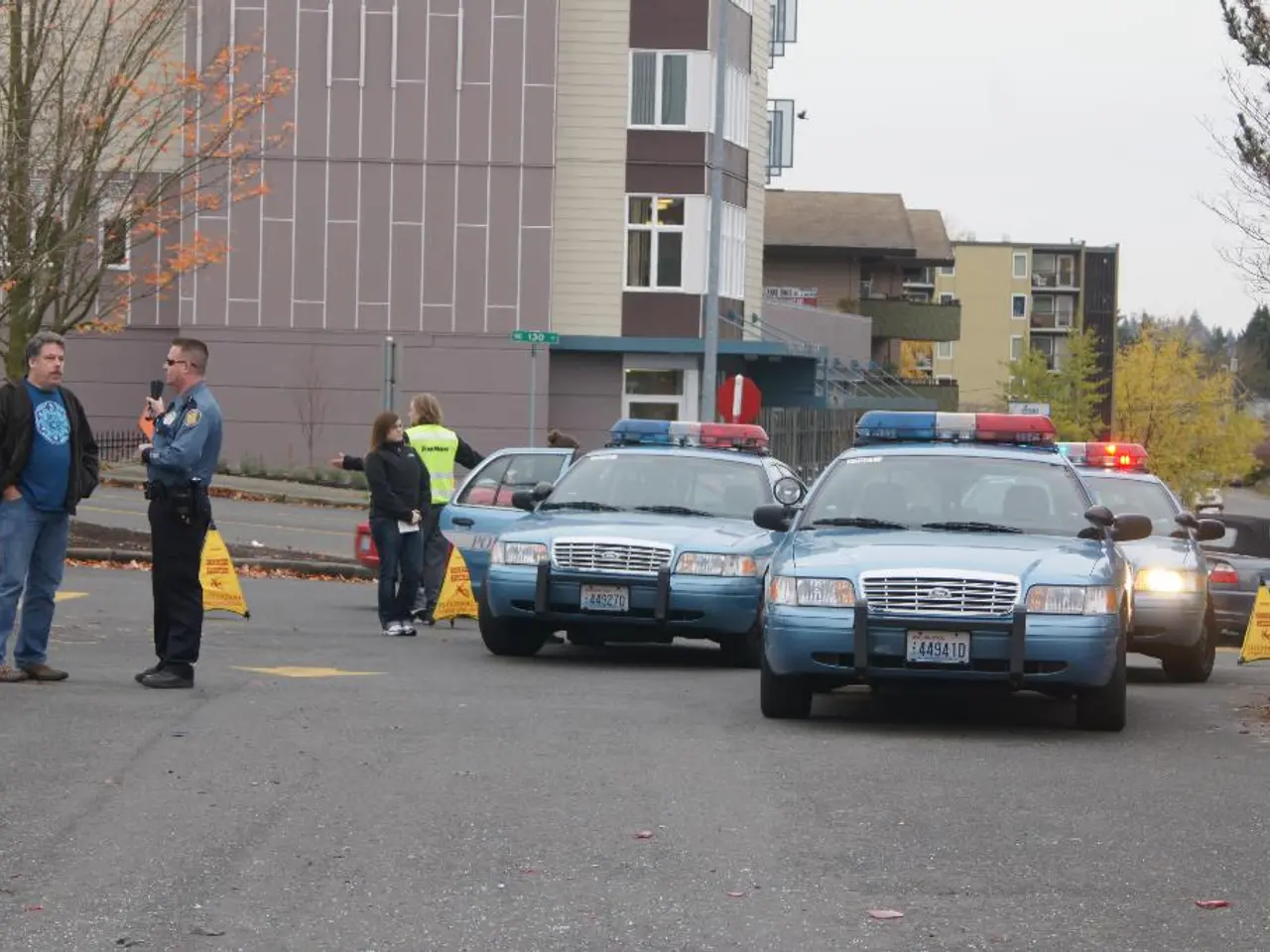Search teams from FEMA struggle to get to Texas in the aftermath of flooding, delayed due to ongoing agency restructuring
In the aftermath of the devastating 2023 floods in central Texas, questions have arisen regarding the response time and effectiveness of the Federal Emergency Management Agency (FEMA) and the Department of Homeland Security (DHS). The delayed deployment of Urban Search and Rescue (USAR) teams from FEMA during the disaster has been attributed to a new DHS policy requiring Homeland Security Secretary Kristi Noem's personal approval for all contracts and deployments exceeding $100,000.
The policy change, intended to streamline spending and empower state and local actors, created bureaucratic hurdles during a critical time. Noem did not authorise the deployment of USAR teams until more than 72 hours after the flooding began, significantly hampering early rescue efforts when rapid response was essential.
This delay was particularly consequential as it slowed requests for important resources such as aerial imagery and call center staffing to assist local responders. It also meant the search and rescue teams could not be mobilised at the pace seen in previous disasters, where federal response times were typically faster and less encumbered by such approval requirements.
The delay in deploying USAR teams had a significant impact on response time, slowing crucial rescue operations and potentially affecting the effectiveness of search and rescue operations. In comparison, during previous disaster responses, there was no such centralised approval causing delay, resulting in typically deployed USAR teams within hours.
FEMA officials and DHS spokespeople defended these changes as part of a broader effort to make disaster response more efficient, lean, and state-empowered, moving away from what they describe as a "bloated, DC-centric" model. However, critics argue that the delay contributed to a slower overall response and worsened the human toll, as more than 120 people died and over 160 remained missing after the floods, including many children.
During the disaster, over 75 local departments joined disaster aid efforts in Texas after the storm. Urban search and rescue teams from Indiana, Arizona, Colorado, Missouri, Nevada, and Ohio were dispatched to Texas, as well as the National Urban Search & Rescue Response System's teams from these states. Each team has personnel specifically trained in water rescue who work alongside local rescuers to help reach and recover survivors during flooding events.
One Coast Guard swimmer has been credited with rescuing approximately 165 people in Texas. The Nevada team arrived on Wednesday and began setting up camp on Thursday. Unfortunately, no victims have been found alive since last Friday, July 4. A team from Ohio was activated by FEMA later in the week.
The teams began their first day of field work on July 11, a week after the flood. The U.S. Coast Guard also played a crucial role in the rescue efforts, rescuing over 230 Americans in Texas. Despite the challenges faced during the response, the combined efforts of federal, state, and local responders have been instrumental in providing aid and recovery efforts during this devastating disaster.
The delay in obtaining Homeland Security Secretary Kristi Noem's approval for Urban Search and Rescue (USAR) team deployments, due to a new policy requiring such approval for contracts and deployments exceeding $100,000, hampered general news and policy-and-legislation discussions about the efficacy of this procedure during a critical time like the 2023 floods in central Texas. This policy change, which aimed to streamline spending and empower state and local actors, appeared to create bureaucratic hurdles that affected the politics and response time of federal emergency management agencies like FEMA.








